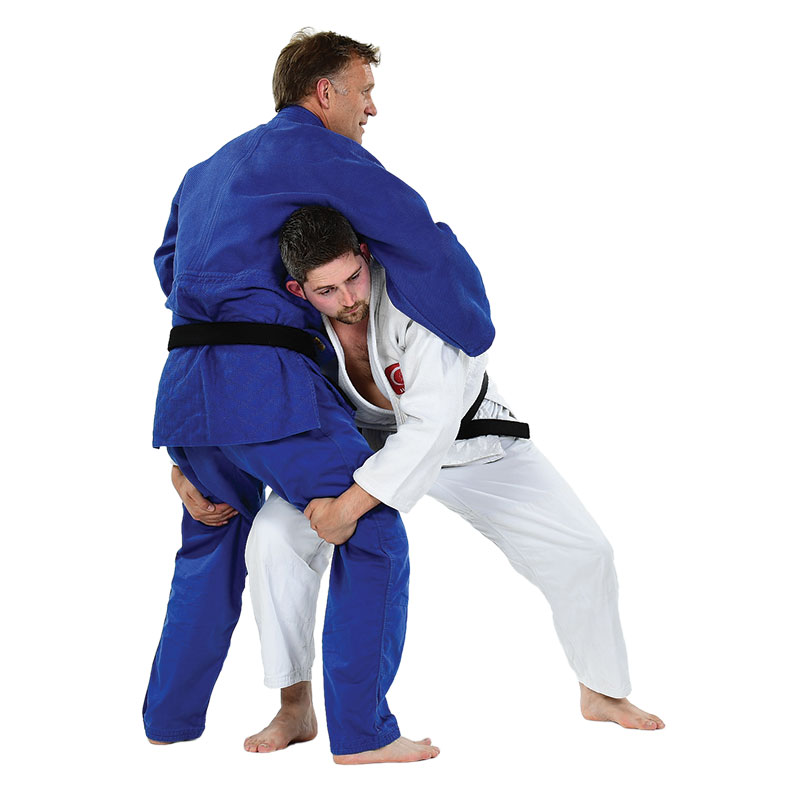Morote-gari 双手刈
Two-Handed Reap
Classification: Te-waza (Hand Technique)
Japanese meaning: Morote = both hands, Gari = reap
Technical Description
Morote-gari is a double-leg takedown that resembles a classic wrestling tackle but is formally recognised within Kodokan Judo. In this throw, tori steps between uke’s legs and uses both arms to wrap behind the knees, lifting or pulling inward while driving the shoulder into the chest of uke. The goal is to unbalance uke backward and throw them directly onto their back.
Although effective, Morote-gari is banned in IJF competitions since the 2010 rule change that prohibits direct attacks to the legs. However, the technique remains highly valued in kata, self-defence training, and traditional judo practice.

Biomechanics of Morote-gari
This technique functions as a lever system:
-
Fulcrum (C): The area just behind uke’s knees acts as the rotation point.
-
Force (F1): The pulling of the legs toward tori‘s body.
-
Reaction (Re): Simultaneously, tori’s shoulder drives into uke‘s abdomen or chest, blocking backward escape.
-
The combined motion lifts or sweeps uke off their feet, flipping them backward.

Did You Know?
-
Morote-gari is not part of the modern IJF competitive rule set, but remains in the Kodokan syllabus as a formal throw.
-
It is listed as a Habukareta waza—one of the preserved throws in the 1895 Gokyo no Waza.
-
This technique is particularly popular in cross-training with wrestling, sambo, and BJJ, where leg grabs are standard.
-
Morote-gari is an excellent kaeshi-waza (counter technique) against upright stances or when uke is pushing forward aggressively.